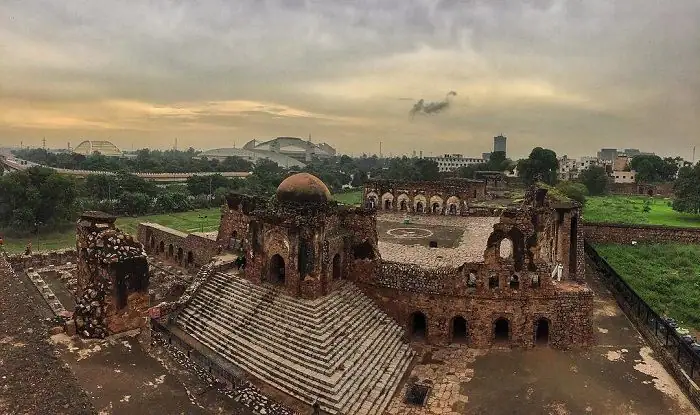For smooth Ad free experience
For smooth Ad free experience
Delhi is filled with so much history. With so much history to explore and uncover, one really misses out on the interesting culture that these historical places used to and even still do inculcate. Bringing one such historical place to you today, is the fort of Firuz Shah!

Fort known as the *Kushk-i-Firuz* or *Firuz Shah Kotla*
Firuz Shah Tughlaq took to the throne as a Sultan in Delhi in the 14th century. Just like any other Sultans, he too, through his grandeur reflected power. Naming an entire city after him Firuzabad, he went onto building a fort known as the Kushk-i-Firuz or Firuz Shah Kotla.
His fort was built in 1354-56 along the bank of river Yamuna. The location was chosen strategically to comply with the needs of the water supply. The city extended up to the Purana Qila in the south, with at least 150,000 people living there.
It was through Ziyauddin Barani’s account Tarikh-i-Firuz Shahi that we are able to extract the information.
The kushik is three-storey rectangular enclosure, build in rubble masonry.
An interesting feature of the complex is that at the top of the entrance, stands the Asokan Pillar from Topra. It is interesting to notice how in the Sultanate era, which is also categorised as the Medieval era in Indian history, we see the coexistence of an artifact, which does not only belong from a different cultural sphere but also are years apart on the timeline.
The Asokan Pillar was first deciphered by James Prinsep. Barani doesn’t mention the erection of pillars, but through Shams-i Siraj Afif’s text, we know of the best-known pillar- the one retrieved from Topra, transported by boat in Yamuna (Jamuna) River is the Ashokan Pillar.
As per Cunnigham’s calculation, the diameter is 64.3cm at the top and 97.3 cm at the base. The upper portion is polished and has stonework characteristics of the Mauryan period.
The complex also includes a baoli. A feature that is common to almost all architectural structures in the Indian subcontinent. The baoli is obviously created for the purpose of water conservation, as Delhi had always suffered from a shortage of water.
Adjacent to the Asokan Pillar, stands the Jami Masjid. Many historians believe that it resembles the Kalan Masjid, built by Firuz Shah’s Prime Minister.
Not only does the location of the fort symbolises a coexistence of religious and cultural harmony. The fort also served as a secret meeting point by the Indian revolutionaries against British rule.
It is also interesting to note that due to the monument’s close proximity to the Indian cricket stadium, where the British played cricket, the stadium was named after the monument itself.
Firuz Shah-Kotla is one such monument that offers a lot, in Part II, we will unveil more about this place!
0
You might be interested in reading more from
